In the field of precision manufacturing, the selection of thread milling cutters directly affects processing efficiency, cost control and product quality. Due to the significant differences in processing scenarios, workpiece materials and process standards in various industries, the performance requirements for thread milling cutters are also different. The following will combine the actual needs of industries such as aerospace, medical devices, automobile manufacturing and energy equipment to deeply analyze the selection strategy of thread milling cutters.
What is a thread milling cutter?
A thread milling cutter is a special cutting tool that uses CNC machine tools for precision thread forming, and realizes spiral trajectory processing through multi-axis linkage. Compared with the extrusion forming method of traditional taps, this tool uses the milling principle and can achieve IT6 level tolerance accuracy on complex workpieces such as titanium alloy turbine disks and medical bone screws. Its typical structure adopts a modular design, with a carbide tool body and a TiAlN coated blade. When processing Inconel 718 high-temperature alloy, the cutting temperature can be controlled below 600°C, and the tool life is increased by 5-8 times compared to high-speed steel taps. Modern thread milling cutters have developed a fine specification of 0.5mm in diameter, which has been successfully applied to the thread processing of precision optical devices. The surface roughness can reach Ra0.4μm, which has completely changed the limitations of traditional tapping technology in the field of difficult-to-process materials.
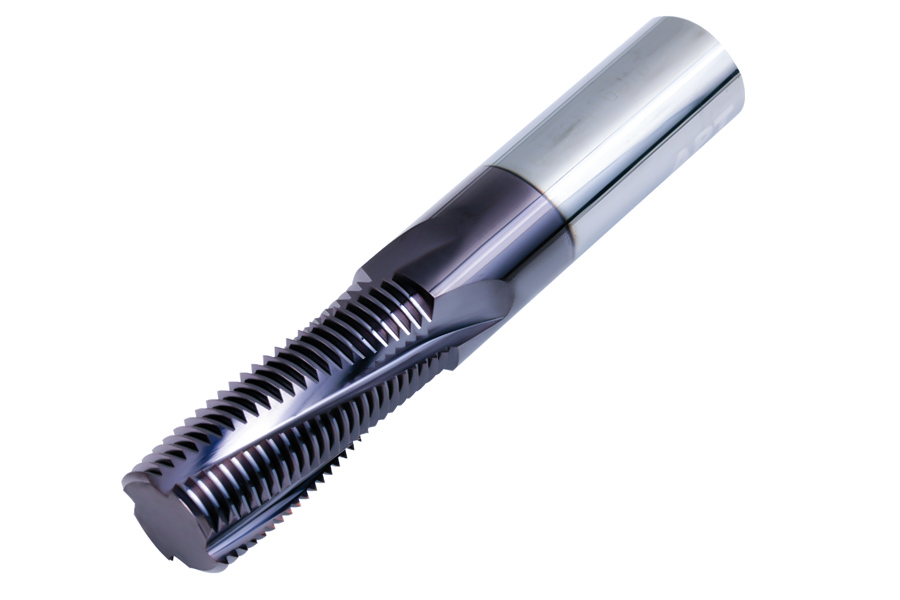
What Defines the Core Structure of a Thread Milling Cutter?
The core structure of a thread milling cutter is mainly determined by two factors: blade design and material selection, which directly affect its processing performance and applicable scenarios.
- Blade design: the key to ensuring cutting efficiency and accuracy
- Spiral chip groove design: The spiral chip groove that complies with the DIN 1835B standard can optimize the chip removal path, effectively reduce the friction heat generated during the cutting process, and reduce the risk of built-up edge.
- Angle parameter setting: The helix angle of a thread milling cutter is usually between 30°-45°. When processing materials such as stainless steel, a larger helix angle helps reduce cutting forces and make the processing process smoother.
Tip Configuration point
- Number of blades: The standard configuration is 4-6 blades. When a 6-blade configuration is used, a high-pressure internal cooling system is required to prevent chip entanglement and improve the quality of the processed surface.
- Blade type: Unequal tooth design can disperse the vibration generated during processing and enhance tool stability.
- Size coverage: Thread milling cutters support M1.6 – M100 thread processing, corresponding to hole diameters of 1.3mm – 85mm, reducing the cost of frequent tool changes due to processing threads of different specifications.
- Material selection: determines tool life and processing scenarios
| Material type | ISO standard | Hardness/temperature resistance | Typical application scenarios |
|---|---|---|---|
| Carbide | K class | HRA91-93, temperature resistance 800℃ | Carbon steel, alloy steel (such as 45# steel, 42CrMo) |
| CBN (cubic boron nitride) | H class | HV4500, temperature resistance 1400℃ | Hardened steel (HRC50+), chilled cast iron |
| High-speed steel | – | HRC62-67, temperature resistance 600℃ | Aluminum alloy, plastic (low hardness material) |
Thread milling cutters made of different materials have their own technical advantages: cemented carbide has a high cost-effectiveness ratio, and its service life can exceed 3,000 holes when used for M12 thread processing; CBN, as a superhard material, can have a service life of up to 5 times that of cemented carbide when processing hardened steel; PCD is often used for non-standard processing, and can achieve high-precision effects with a surface roughness of Ra≤0.8μm in the processing of silicon-aluminum alloys and composite materials.
Blade design and material selection complement each other and jointly shape the core structure of thread milling cutters. In actual applications, enterprises need to make reasonable choices based on specific processing requirements to maximize the performance of thread milling cutters.
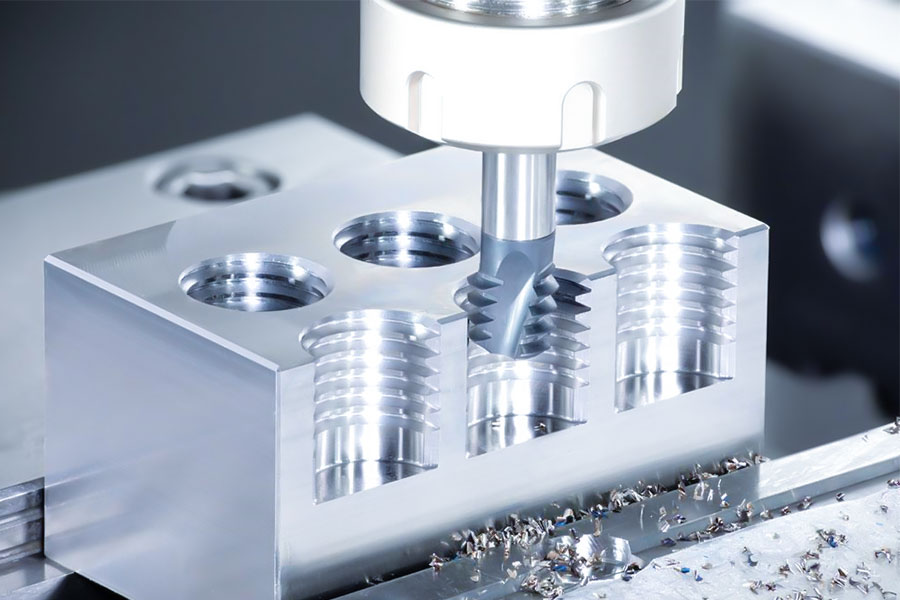
Thread Milling vs Tapping: Which Process Wins in Precision?
In the field of high-precision thread processing, process selection directly affects product quality and production costs. With the popularization of CNC technology, the competition between thread milling and traditional tapping has become increasingly fierce. Based on the ISO 68-1 thread standard, LS conducts an in-depth comparison from three dimensions: dimensional tolerance, surface quality, and tool cost, reveals the accuracy difference between the two processes, and provides scenario-based selection recommendations.
1.Precision Showdown: Thread Milling Fully Overwhelms Tapping
(1)Dimensional tolerance comparison
Thread milling relies on CNC programming to achieve multi-axis linkage, which can achieve IT6-level high precision, with a tolerance range of ±0.013mm. It is often used in the processing of precision fittings with extremely high precision requirements such as hydraulic valve bodies and aviation fasteners.
Traditional tapping is affected by tap manufacturing errors and cutting force deformation, and its tolerance level is only IT8, with a tolerance range of ±0.033mm. The error is more than twice that of thread milling, and it is difficult to meet high-precision requirements.
(2) Surface roughness difference
Thread milling uses a spiral cutting path, which effectively reduces cutting friction. The surface roughness after processing can reach Ra 0.8μm, which can be directly used for NPT and other sealing thread processing.
Traditional tapping uses extrusion molding, which easily produces burrs on the surface after processing. The surface roughness is only Ra 3.2μm, and usually requires secondary polishing, which increases the processing steps and costs.
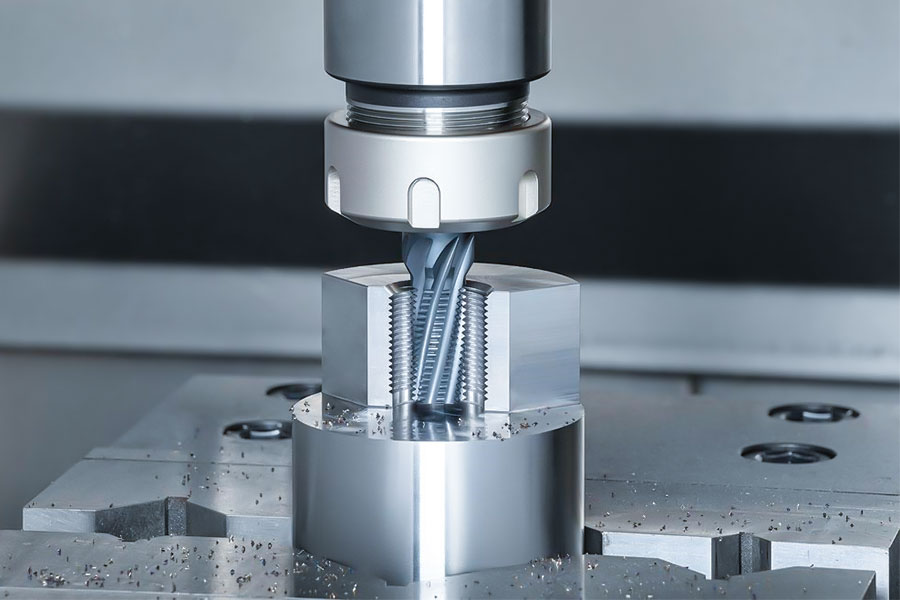
2.Hidden costs: tool life and comprehensive benefit analysis
| Indicators | Thread milling | Traditional tapping |
|---|---|---|
| Single tool cost | 0.067/hole (0.067/hole (200÷3000 holes) | 0.075/hole (0.075/hole (15÷200 holes) |
| Processing efficiency | Single tool completes rough and fine processing, low tool change frequency | Need to change taps many times, long downtime |
| Applicable materials | Steel, titanium alloy, composite materials | Medium and low hardness materials (HRC<40) |
Which Materials Require Special Thread Milling Strategies?
In high-end manufacturing, thread processing of titanium alloys, high-temperature alloys, and composite materials is prone to tool wear and workpiece scrapping due to the high strength, high temperature resistance, or anisotropy of the materials. This article provides special process solutions for the difficulties of three types of materials.
Titanium alloy (AMS 4928): Thermal management is the key
Titanium alloy has low thermal conductivity (7.2 W/m・K), and has chemical affinity with tools above 500℃, and the springback error of work hardening is up to 0.05mm. Use ≥80bar forced oil cooling to control the temperature to ≤400℃; select TiAlN coating with sharp cutting edge to reduce cutting force by 15%; control the speed to ≤800rpm and feed per tooth to 0.06mm. After application in a factory, the tool life increased from 50 holes to 220 holes, with an accuracy of IT7 level.
High temperature alloy (Inconel 718): high cutting temperature resistance
Inconel 718 has high high temperature strength, hardened layer of 0.1mm, and tool wear increases sharply above 600℃. Use mixed forward and reverse milling (forward milling radial cutting 0.2mm, reverse milling 0.05mm) to control temperature ≤550℃; SiAlON ceramic coated milling cutter is resistant to 1200℃, cutting speed 25m/min; variable feed (0.03 – 0.08mm) chip breaking. The tool life of a certain company increased from 8 holes to 35 holes, and the efficiency increased by 40%.
Composite materials (CFRP): prevent delamination and fiber tearing
CFRP has low interlayer strength, and traditional processing causes fiber pull-out and load reduction by more than 30%. Diamond-coated tools (PCD cutting edge Ra≤0.1μm) and a 20° rake angle are used to prevent delamination; high speed 12000rpm, low feed 0.02mm/z to prevent fiber breakage; Z-axis feed and speed synchronization to prevent vibration, vacuum dust removal to remove carbon powder. The Ra value of a drone processing was reduced from 2.1μm to 0.7μm, and the scrap rate was reduced from 12% to 0.5%.
General principles: Golden rules for thread milling of special materials
80% of tool failures are caused by overheating. Cooling needs to match the thermal conductivity of the material; select coatings based on the chemical activity of the material; adjust feed speed adaptively, such as CFRP to avoid the 200-400Hz resonance frequency band. Customized processes can improve processing quality and economy. If you need a solution, please contact an engineer.
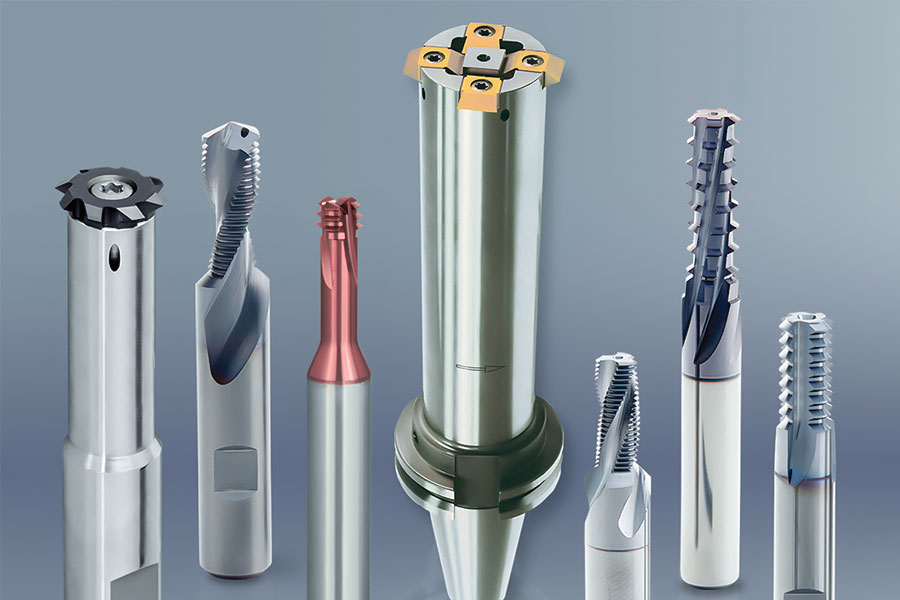
What Are the Critical Advantages of Thread Milling?
Thread milling has significant advantages in modern machining due to its unique process, as follows.
Flexible machining: one blade for multiple uses, program-driven
The same thread milling cutter can process threads of different sizes (such as M6×1 to M8×1.25) by adjusting CNC program parameters, reducing tool inventory costs. The pitch is controlled by the program, and the tool only needs to match the thread profile, getting rid of the traditional tapping’s dependence on fixed-pitch taps.
Blind hole optimization: revolutionary improvement in space utilization
The thread milling cutter only needs a 0.3mm retraction distance at the bottom of the blind hole (traditional tapping ≥2mm), breaking through the depth limit. Milling intermittent cutting, smooth chip removal, avoid tap breakage, suitable for deep blind hole processing.
Compound angle support: Breaking through the limitation of machining planes
With the help of CNC multi-axis linkage, threads can be machined on 30° inclined surfaces or complex curved surfaces, which cannot be achieved with traditional tapping. The programming path is programmed through the G code coordinate system rotation command, without the need for custom tools, simplifying the machining of complex workpieces.
Significant advantages over traditional processes
Traditional tapping requires special taps, which are limited to vertical plane machining and are restricted by material hardness; turning relies on the rotational symmetry of the workpiece, and it is difficult to machine complex angles or large-sized non-rotating parts.
Thread milling improves design freedom and supports the machining of special-shaped parts, micro-holes and compound angle threads; it reduces the types of tools, reduces breakage losses, and shortens the machining cycle (such as blind holes without secondary root cleaning), which is an indispensable process for precision manufacturing.
How to Select Thread Milling Cutters for Different Industries?
In the field of precision manufacturing, the selection of thread milling cutters is related to processing efficiency, cost and quality. Different industries have different requirements for tool performance due to different processing scenarios, materials and process standards. The following is an analysis of the selection strategy based on the characteristics of the aerospace, medical device and automobile manufacturing industries.
1.Aerospace industry: high precision and material compatibility are preferred
The processing objects are mostly titanium alloys and nickel-based high-temperature alloys, requiring thread coaxiality < 0.01mm, and the tool needs to adapt to extreme working conditions. Selection points: Use HRA92 or above solid carbide tools to meet NAS 9120 standards; 4-6-edge spiral groove design balances cutting force and chip removal; AlCrN or TiSiN nano-coating resists high-temperature adhesion, and tool life is extended by 30%+, which is used for engine and landing gear key parts processing.
2.Medical device industry: biocompatibility and finish are equally important
It must comply with ASTM F136/F138 standards, with a surface roughness of Ra<0.2μm, involving micro-thread processing. Selection strategy: Mirror polished tools prevent residue adhesion; TiN or DLC antibacterial coating inhibits bacteria; ≤2mm micro milling cutter with HSK-E25 handle is used for artificial joint and endoscope thread processing.
3.Automotive manufacturing: Focus on cost and mass production efficiency
Pursuing fast tool change and low cost, efficient processing of cast iron and aluminum alloy is required. Selection plan: Indexable inserts (triangle/diamond) reduce the cost of a single insert and support fast tool change; universal tool holders are suitable for M6-M20 inserts; CVD coated tools increase the processing life of cast iron, and tungsten carbide substrates prevent chipping in aluminum alloy processing, which is used for gearbox and wheel hub thread hole processing.
4.Selection Decision Matrix (Comparison Quick Check Table)
| Industry | Core Indicator | Recommended Tool Type | Cost-effectiveness |
|---|---|---|---|
| Aerospace | Coaxiality <0.01mm | Solid carbide milling cutter | High unit price, long life |
| Medical equipment | Ra <0.2μm, biocompatibility | Polishing coating micro milling cutter | Medium-high unit price, high added value |
| Automobile manufacturing | Unit cost reduced by 60% | Indexable insert + universal tool holder | Low unit price, suitable for large quantities |
- Aerospace: Precision and material performance > cost → certified carbide tools.
- Medical devices: Surface quality and compliance > efficiency → bio-grade polishing tools.
- Automotive manufacturing: scale effect > single processing speed → modular indexable solutions.
Through precise selection, companies can maximize the advantages of thread milling technology and achieve a balance between quality, efficiency and cost. If you need to further match processing parameters (such as cutting speed and feed rate), you can refer to industry standards (such as ISO 13399) or contact tool suppliers for customized solutions.
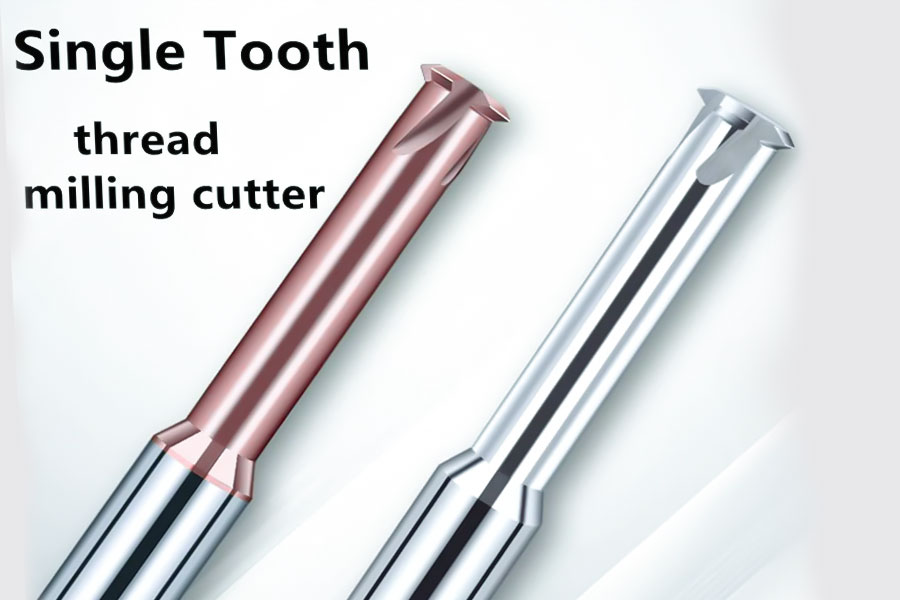
Summary
A thread milling cutter is a precision tool that is driven by a CNC machine tool and combines spiral interpolation motion to achieve thread forming. Its multi-blade carbide structure and spiral groove design have both efficient cutting and chip removal capabilities. It can adapt to different pitches, tooth shapes and complex angles (such as 30° inclined surfaces), breaking through the limitations of traditional turning and tapping in material hardness, blind hole space and processing flexibility. It is widely used in high-precision fields such as aerospace, medical equipment, and large-scale scenarios such as automobile manufacturing, and has become the core solution for efficient and high-reliability thread processing in modern intelligent manufacturing.
📞 Phone: +86 185 6675 9667
📧 Email: info@longshengmfg.com
🌐 Website: https://lsrpf.com/
Disclaimer
The content of this page is for informational purposes only.LS SeriesNo representations or warranties of any kind, express or implied, are made as to the accuracy,completeness or validity of the information. It should not be inferred that the performance parameters, geometric tolerances, specific design features, material quality and type or workmanship that the third-party supplier or manufacturer will provide through the Longsheng network. This is the responsibility of the buyerAsk for a quote for partsto determine the specific requirements for these parts.please Contact us Learn more information.
LS Team
LS is an industry-leading companyFocus on custom manufacturing solutions. With over 20 years of experience serving more than 5,000 customers, we focus on high precisionCNC machining,Sheet metal fabrication,3D printing,Injection molding,metal stamping,and other one-stop manufacturing services.
Our factory is equipped with more than 100 state-of-the-art 5-axis machining centers and is ISO 9001:2015 certified. We provide fast,efficient and high-quality manufacturing solutions to customers in more than 150 countries around the world. Whether it’s low-volume production or mass customization,we can meet your needs with the fastest delivery within 24 hours. chooseLS TechnologyIt means choosing efficiency, quality and professionalism.
To learn more, please visit our website:www.lsrpf.com

FAQs
1.What is a milling cutter?
A milling cutter is a rotary cutting tool installed on a milling machine or machining center. It is usually made of cemented carbide, high-speed steel and other materials. Its blade is designed with multiple cutting teeth. Material removal is achieved through the high-speed rotation of the spindle and the relative movement of the workpiece. It is used for plane milling, grooving, contour processing and other operations. It is a key tool for achieving complex geometric shapes in metal processing.
2.What is a thread cutter?
A thread cutter (i.e. a thread milling cutter) is a special tool that cuts precise internal and external threads on the workpiece through the multi-edge spiral groove structure and the spiral interpolation movement of the CNC machine tool. Its advantage is that a single tool can adapt to a variety of pitches and tooth shapes, support large diameter, deep blind holes and inclined surface thread processing, and is more flexible and efficient than traditional tapping or turning.
3.What is the effect of thread milling?
Thread milling can achieve high-precision (such as IT7 tolerance) and high surface finish (Ra < 0.8μm) thread forming, which is especially suitable for difficult-to-process materials (titanium alloy, stainless steel) and complex structures (blind holes, non-vertical planes), while reducing tool loss and processing thermal deformation, significantly improving the sealing, strength and service life of the thread.
4.What is the purpose of thread cutting?
Thread cutting is mainly used for threaded connection structures that require high-precision matching in mechanical parts, such as aerospace engine bolts, automotive gearbox threaded holes, medical implant micro threads, etc., covering functions such as fastening, sealing, and transmission. It is an indispensable process link in the fields of equipment manufacturing, precision engineering and mass production.







